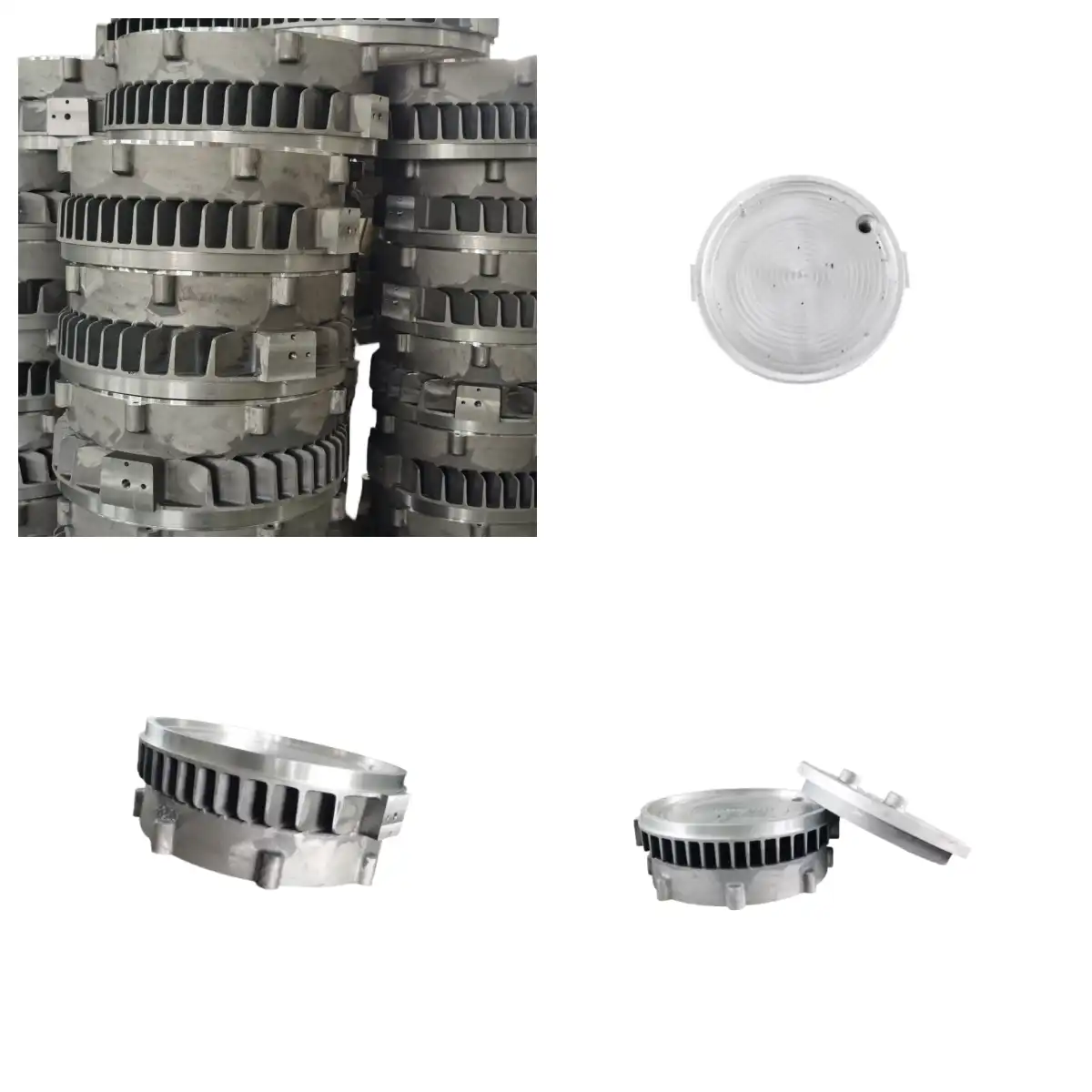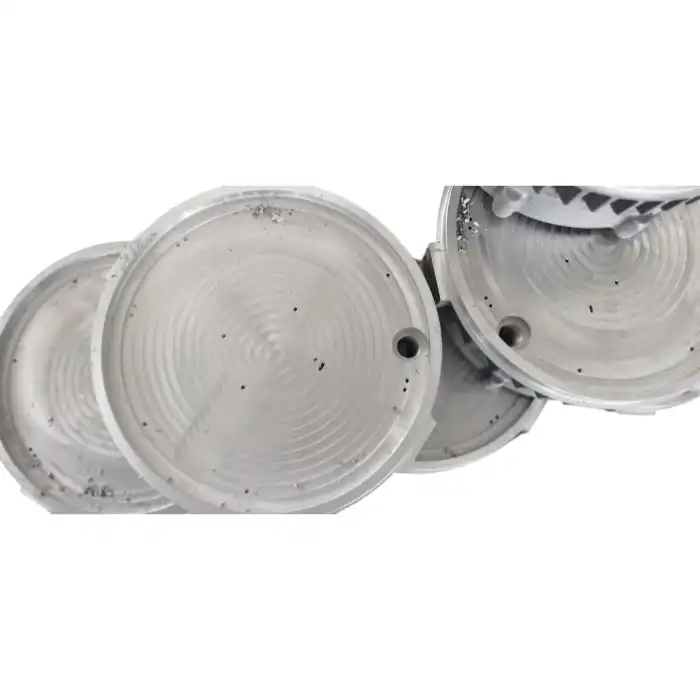Essential Tools and Techniques for Sand Casting Inspection
Precision Measuring Instruments
When it comes to inspecting sand castings for dimensional accuracy, precision measuring instruments play a pivotal role. Calipers, micrometers, and coordinate measuring machines (CMMs) are indispensable tools in this process. Calipers, both digital and vernier, offer quick and accurate measurements of external and internal dimensions. Micrometers, known for their high precision, are ideal for measuring thickness and diameters with extreme accuracy. CMMs, on the other hand, provide comprehensive 3D measurements of complex geometries, allowing for detailed analysis of the entire casting.
Non-Destructive Testing Methods
Non-destructive testing (NDT) methods are crucial for evaluating sand castings without compromising their integrity. X-ray radiography is a powerful technique that reveals internal defects such as voids or inclusions. Ultrasonic testing uses high-frequency sound waves to detect flaws and measure wall thickness. Magnetic particle inspection is effective for ferrous materials, highlighting surface and near-surface discontinuities. These NDT methods, when used in conjunction with dimensional measurements, provide a comprehensive assessment of casting quality.
Surface Profilometry
Surface finish is a critical aspect of sand casting quality, and surface profilometry offers a quantitative approach to its evaluation. Profilometers measure surface roughness by tracing a stylus across the casting's surface or using optical techniques. This data helps in assessing whether the casting meets specified surface finish requirements, which can be crucial for functional and aesthetic purposes. Advanced 3D profilometers can even create detailed topographical maps of the casting surface, aiding in the identification of irregularities or defects.
Step-by-Step Inspection Process for Dimensional Accuracy
Visual Examination and Documentation
The inspection process begins with a thorough visual examination of the sand casting. This initial step involves carefully scrutinizing the entire surface for visible defects such as porosity, cracks, or surface irregularities. Inspectors should document their observations, including photographs of any notable features or potential issues. This visual assessment serves as a foundation for subsequent, more detailed inspections and helps in identifying areas that may require closer examination.
Critical Dimension Measurements
After the visual inspection, the next step is to measure critical dimensions of the sand casting. This involves using the appropriate precision measuring tools to check key features against the specified tolerances. Inspectors should focus on dimensions that are crucial for the casting's function or assembly, such as hole diameters, overall length and width, and wall thicknesses. It's important to take multiple measurements at different points to account for any variations across the casting. All measurements should be recorded and compared against the engineering drawings or CAD models to identify any deviations.

Geometric Dimensioning and Tolerancing (GD&T) Verification
For sand castings with complex geometries or tight tolerances, geometric dimensioning and tolerancing (GD&T) verification is essential. This process involves checking the casting's conformance to GD&T specifications, which define the allowable variations in form, orientation, and location of features. Using specialized equipment like CMMs or optical comparators, inspectors can assess parameters such as flatness, perpendicularity, concentricity, and true position. GD&T verification ensures that the casting will function as intended and fit properly in assemblies, even if individual dimensions are within tolerance.
Advanced Techniques for Enhancing Dimensional Accuracy Inspection
3D Scanning and Comparison
3D scanning technology has revolutionized the inspection of sand castings for dimensional accuracy. Using laser or structured light scanners, inspectors can create highly detailed 3D models of the casting in minutes. These digital representations can then be compared to the original CAD design using specialized software. This comparison generates color-coded deviation maps, highlighting areas where the casting differs from the intended design. 3D scanning is particularly valuable for complex geometries and enables rapid inspection of large batches of castings.
Statistical Process Control (SPC)
Implementing Statistical Process Control (SPC) in the inspection process can significantly enhance the overall quality and consistency of sand castings. By collecting and analyzing measurement data over time, manufacturers can identify trends, variations, and potential issues in the casting process. SPC charts, such as X-bar and R charts, help monitor key dimensions and process parameters. This proactive approach allows for early detection of process shifts or deterioration, enabling timely corrective actions and continuous improvement of dimensional accuracy.
Automated Inspection Systems
As technology advances, automated inspection systems are becoming increasingly prevalent in sand casting quality control. These systems often combine multiple inspection techniques, such as 3D scanning, X-ray imaging, and automated measuring, into a single, integrated solution. Automated systems can rapidly inspect large volumes of castings with high precision and consistency, reducing human error and increasing throughput. Additionally, they can automatically generate detailed inspection reports, facilitating documentation and traceability. While initial investment may be significant, automated inspection systems can provide substantial long-term benefits in terms of efficiency and quality assurance.
Conclusion
Inspecting sand castings for dimensional accuracy is a multifaceted process that requires a combination of traditional measurement techniques and advanced technologies. By employing a comprehensive approach that includes visual inspection, precise measurements, and non-destructive testing, manufacturers can ensure the production of high-quality castings that meet stringent dimensional requirements. The integration of 3D scanning, statistical process control, and automated inspection systems further enhances the ability to maintain consistency and detect potential issues early in the production process. As the industry continues to evolve, staying updated with the latest inspection techniques and technologies will be crucial for maintaining a competitive edge in the sand casting market.
FAQs
What are the most common dimensional issues in sand castings?
Common dimensional issues include shrinkage, warpage, and core shift. These can result in variations in wall thickness, misaligned features, or overall distortion of the casting.
How often should measuring instruments be calibrated?
Calibration frequency depends on usage and environmental conditions, but generally, instruments should be calibrated at least annually or as recommended by the manufacturer.
Can 3D scanning completely replace traditional measuring methods?
While 3D scanning is highly effective, it's often best used in conjunction with traditional methods for comprehensive inspection, especially for critical dimensions or specific tolerances.
Expert Sand Casting Inspection Services | Fudebao Technology
At Fudebao Technology, we specialize in high-precision sand casting and offer expert inspection services to ensure dimensional accuracy. Our state-of-the-art facility is equipped with advanced measuring instruments and 3D scanning technology, allowing us to deliver castings that meet the most stringent quality standards. As a leading sand casting supplier and manufacturer, we serve diverse industries globally. For inquiries about our casting and inspection capabilities, please contact us at hank.shen@fdbcasting.com.
References
Smith, J. (2022). Advanced Techniques in Sand Casting Inspection. Journal of Manufacturing Technology, 45(3), 278-295.
Johnson, R., & Brown, T. (2021). Dimensional Accuracy in Metal Casting: A Comprehensive Guide. Metal Casting Quarterly, 56(2), 112-128.
Lee, S., et al. (2023). Application of 3D Scanning Technology in Sand Casting Quality Control. International Journal of Metrology and Quality Engineering, 14(1), 15-32.
Garcia, M. (2022). Statistical Process Control for Improved Casting Dimensional Accuracy. Quality Engineering, 34(4), 567-582.
Thompson, D., & Wilson, E. (2021). Non-Destructive Testing Methods for Sand Casting Inspection. Materials Evaluation, 79(8), 891-907.
Chen, Y., et al. (2023). Automated Inspection Systems in Metal Casting: Current Trends and Future Prospects. Robotics and Computer-Integrated Manufacturing, 70, 102-118.











